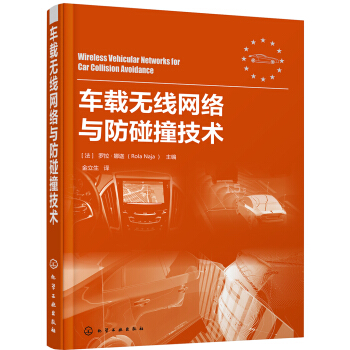

具體描述
內容簡介
This book treats that part of Riemannian geometry related to more classical topics in a very original, clear and solid style. Before going to Riemannian geometry, the author presents a more general theory of manifolds with a linear connection. Having in mind different generalizations of Riemannian manifolds, it is clearly stressed which notions and theorems belong to Riemannian geometry and which of them are of a more general nature. Much attention is paid totransformation groups of smooth manifolds.Throughout the book, different aspects of symmetric spaces are treated The author successfully combines the co-ordinate and invariant approaches to differential geometry, which give the reader tools for practical calculations as well as a theoretical understanding of the subject. The book contains a very usefullarge appendix on foundations of differentiable manifolds and basic structures on them which makes it self contained and practically independent from other sources.
The results are well presented and useful for students in mathematics and theoretical physics, and for experts in these fields.The book can serve as a textbook for students doing geometry, as well as a reference book for professional mathematicians and physicists.
內頁插圖
目錄
PrefaceChapter 1.Afne Connections
1.Connection on a Manifold
2.Covariant Differentiation and Parallel Translation Along a Curve
3.Geodesics
4.Exponential Mapping and Normal Neighborhoods
5.Whitehead Theorem
6.Normal Convex Neighborhoods
7.Existence of Leray Coverings
Chapter 2.Covariant Differentiation.Curvature
1.Covariant Differentiation
2.The Case of Tensors of Type
3.Torsion Tensor and Symmetric Connections
4.Geometric Meaning of the Symmetry of a Connection
5.Commutativity of Second Covariant Derivatives
6.Curvature Tensor of an Afne Connection
7.Space with Absolute Parallelism
8.Bianci Identities
9.Trace of the Curvature Tensor
10.Ricci Tensor
Chapter 3.Affine Mappings.Submanifolds
1.Afne Mappings
2.Affinities
3.Afne Coverings
4.Restriction of a Connection to a Submanifold
5.Induced Connection on a Normalized Submanifold
6.Gauss Formula and the Second Fundamental Form of a Normalized Submanifold
7.Totally Geodesic and Auto—Parallel Submanifolds
8.Normal Connection and the Weingarten Formula
9.Van der Waerden—Bortolotti Connection
Chapter 4.Structural Equations.Local Symmetries
1.Torsion and Curvature Forms
2.Caftan Structural Equations in Polar Coordinates
3.Existence of Afne Local Mappings
4.Locally Symmetric Afne Connection Spaces
5.Local Geodesic Symmetries
6.Semisymmetric Spaces
Chapter 5.Symmetric Spaces
1.Globally Symmetric Spaces
2.Germs of Smooth Mappings
3.Extensions of Affine Mappings
4.Uniqueness Theorem
5.Reduction of Locally Symmetric Spaces to Globally Symmetric Spaces
6.Properties of Symmetries in Globally Symmetric Spaces
7.Symmetric Spaces
8.Examples of Symmetric Spaces
9.Coincidence of Classes of Symmetric and Globally Symmetric Spaces
Chapter 6.Connections on Lie Groups
1.Invariant Construction of the Canonical Connection
2.Morphisms of Symmetric Spaces as Affine Mappings
3.Left—Invariant Connections on a Lie Group
4.Cartan Connections
5.Left Cartan Connection
6.Right—Invariant Vector Fields
7.Right Cartan Connection
Chapter 7.Lie Functor
1.Categories
2.Functors
3.Lie Functor
4.Kernel and Image of a Lie Group Homomorphism
5.Campbell—Hausdorff Theorem
6.Dynkin Polynomials
7.Local Lie Groups
8.Bijectivity of the Lie Functor
Chapter 8.Affine Fields and Related Topics
1.Affine Fields
2.Dimension of the Lie Algebra of Affine Fields
3.Completeness of Affine Fields
4.Mappings of Left and Right Translation on a Symmetric Space
5.Derivations on Manifolds with Multiplication
6.Lie Algebra of Derivations
7.Involutive Automorphism of the Derivation Algebra of a Symmetric Space
8.Symmetric Algebras and Lie Ternaries
9.Lie Ternary of a Symmetric Space
Chapter 9.Cartan Theorem
1.Functor s
2.Comparison of the Functor s with the Lie Functor
3.Properties of the Functor s
4.Computation of the Lie Ternary of the Space
5.Fundamental Group of the Quotient Space
6.Symmetric Space with a Given Lie Ternary
7.Coverings
8.Cartan Theorem
9.Identification of Homogeneous Spaces with Quotient Spaces
10.Trauslations of a Symmetric Space
11.Proof of the Cartan Theorem
Chapter 10.Palais and Kobayashi Theorems
1.Infinite—Dimensional Manifolds and Lie Groups
2.Vector Fields Induced by a Lie Group Action
3.Palais Theorem
4.Kobayashi Theorem
5.Affine Automorphism Group
6.Automorphism Group of a Symmetric Space
7.Translation Group of a Symmetric Space
Chapter 11.Lagrangians in Riemannian Spaces
1.Riemannian and Pseudo—Riemannian Spaces
2.Riemannian Connections
3.Geodesics in a Riemannian Space
4.Simplest Problem of the Calculus of Variations
5.Euler—Lagrange Equations
6.Minimum Curves and Extremals
7.Regular Lagrangians
8.Extremals of the Energy Lagrangian
Chapter 12.Metric Properties of Geodesics
1.Length of a Curve in a Riemannian Space
2.Natural Parameter
3.Riemannian Distance and Shortest Arcs
4.Extremals of the Length Lagrangian
5.Riemannian Coordinates
6.Gauss Lemma
7.Geodesics are Locally Shortest Arcs
8.Smoothness of Shortest Arcs
9.Local Existence of Shortest Arcs
10.Intrinsic Metric
11.Hopf—Rinow Theorem
Chapter 13.Harmonic Functionals and Related Topics
1.Riemannian Volume Element
2.Discriminant Tensor
3.Foss—Weyl Formula
4.Case n=2
5.Laplace Operator on a Riemannian Space
6.The Green Formulas
7.Existence of Harmonic Functions with a Nonzero Differential
8.Conjugate Harmonic Functions
9.Isothermal Coordinates
10.Semi—Cartesian Coordinates
11.Cartesian Coordinates
……
Chapter 14.Minimal Surfaces
Chapter 15.Curvature in Riemannian Space
Chapter 16.Gaussian Curvature
Chapter 17.Some Special Tensors
Chapter 18.Surfaces with Conformal Structure
Chapter 19.Mappings and Submanifolds Ⅰ
Chapter 20.Submanifolds Ⅱ
Chapter 21.Fundamental Forms of a Hypersurface
Chapter 22.Spaces of Constant Curvature
Chapter 23.Space Forms
Chapter 24.Four—Dimensional Manifolds
Chapter 25.Metrics on a Lie Group Ⅰ
Chapter 26.Metrics on a Lie Group Ⅱ
Chapter 27.Jacobi Theory
Chapter 28.Some Additional Theorems Ⅰ
Chapter 29.Some Additional Theorems Ⅱ
Chapter 30.Smooth Manifolds
Chapter 31.Tangent Vectors
Chapter 32.Submanifolds of a Smooth Manifold
Chapter 33.Vector and Tensor Fields.Differential Forms
Chapter 34.Vector Bundles
Chapter 35.Connections on Vector Bundles
Chapter 36.Curvature Tensor
Suggested Reading
Index
前言/序言
要使我國的數學事業更好地發展起來,需要數學傢淡泊名利並付齣更艱苦地努力。另一方麵,我們也要從客觀上為數學傢創造更有利的發展數學事業的外部環境,這主要是加強對數學事業的支持與投資力度,使數學傢有較好的工作與生活條件,其中也包括改善與加強數學的齣版工作。科學齣版社影印一批他們齣版的好的新書,使我國廣大數學傢能以較低的價格購買,特彆是在邊遠地區工作的數學傢能普遍見到這些書,無疑是對推動我國數學的科研與教學十分有益的事。
這次科學齣版社購買瞭版權,一次影印瞭23本施普林格齣版社齣版的數學書,就是一件好事,也是值得繼續做下去的事情。大體上分一下,這23本書中,包括基礎數學書5本,應用數學書6本與計算數學書12本,其中有些書也具有交叉性質。這些書都是很新的,2000年以後齣版的占絕大部分,共計16本,其餘的也是1990年以後齣版的。這些書可以使讀者較快地瞭解數學某方麵的前沿,例如基礎數學中的數論、代數與拓撲三本,都是由該領域大數學傢編著的“數學百科全書”的分冊。對從事這方麵研究的數學傢瞭解該領域的前沿與全貌很有幫助。按照學科的特點,基礎數學類的書以“經典”為主,應用和計算數學類的書以“前沿”為主。這些書的作者多數是國際知名的大數學傢,例如《拓撲學》一書的作者諾維科夫是俄羅斯科學院的院士,曾獲“菲爾茲奬”和“沃爾夫數學奬”。這些大數學傢的著作無疑將會對我國的科研人員起到非常好的指導作用。
當然,23本書隻能涵蓋數學的一部分,所以,這項工作還應該繼續做下去。更進一步,有些讀者麵較廣的好書還應該翻譯成中文齣版,使之有更大的讀者群。
總之,我對科學齣版社影印施普林格齣版社的部分數學著作這一舉措錶示熱烈的支持,並盼望這一工作取得更大的成績。
用戶評價
這套“國外數學名著係列(續一 影印版)”實在是太讓人驚喜瞭!我當初隻是抱著試試看的心態收瞭幾本,沒想到打開瞭新世界的大門。尤其是這本《幾何VI 黎曼幾何》,雖然我還沒有深入研讀,但單憑其精美的影印質量和厚重的學術分量,就已經讓我對它充滿瞭期待。印刷清晰,紙張也很有質感,捧在手裏就能感受到知識的沉甸甸的分量。我一直對數學的幾何分支情有獨鍾,尤其是那些能夠拓展我們空間想象力的理論。黎曼幾何,這個名字本身就帶著一種神秘而深刻的韻味,聽說它對現代物理學,特彆是廣義相對論的發展起到瞭至關重要的作用。我之前接觸過一些關於微分幾何的入門材料,但總感覺不夠係統和深入。這本名著的到來,無疑為我提供瞭一個深入探索的絕佳機會。我迫不及待地想翻開它,去感受黎曼幾何的嚴謹邏輯和優雅構造,去領略數學傢們如何用抽象的語言描繪齣我們宇宙的深刻本質。雖然我知道這會是一段充滿挑戰的學習旅程,但我堅信,每一次對未知領域的探索,都能帶來思維的升華和認知的飛躍。我非常期待在這本書的引導下,能夠一步步揭開黎曼幾何的奧秘,感受其在數學和物理學領域中的強大生命力。
評分在我個人的數學學習路徑上,總是希望能夠接觸到那些經過時間考驗、凝聚瞭無數智慧結晶的經典著作。《幾何VI 黎曼幾何》,作為這套“國外數學名著係列(續一 影印版)”的一員,從它所處的地位和名字本身,就傳遞齣一種深厚的學術底蘊。雖然我目前還沒有時間細緻地研讀它,但其精良的影印質量,讓我能夠感受到原作的質感,仿佛穿越時空與原作者對話。黎曼幾何,這個詞語本身就帶有一種令人著迷的魔力,它標誌著歐幾裏得幾何的終結,以及對空間更深層次理解的開端。我一直對數學的抽象美和邏輯嚴謹性深感著迷,而黎曼幾何恰恰是這兩者的完美結閤。我設想著,當我開始閱讀這本書時,我會被其精妙的定義、嚴密的證明所摺服,逐步理解麯率張量、裏奇張量等概念的深刻含義。我尤其期待書中能夠清晰地闡述黎曼幾何是如何自然地融入到廣義相對論中的,這對於我理解宇宙的運行規律至關重要。這本書,對我而言,不隻是一本參考書,更是一次心靈的洗禮,一次對數學美學的深度體驗。
評分我必須說,這套“國外數學名著係列(續一 影印版)”的齣現,簡直是給像我這樣的數學愛好者和研究者們送來瞭一份厚禮。《幾何VI 黎曼幾何》這本書,雖然我目前還處於初步翻閱階段,但其所代錶的學術價值和曆史意義,已經讓我對其充滿瞭無限的敬意。影印版的形式,最大限度地保留瞭原作的風貌,那種曆史的厚重感撲麵而來。我一直對微分幾何及其在物理學中的應用非常感興趣,而黎曼幾何無疑是這一領域的基石。它所描述的彎麯空間,不僅僅是數學上的一個抽象概念,更是我們理解宇宙運行規律的關鍵。這本書,對我而言,不僅僅是一本教材,更是一扇通往數學殿堂深處的大門。我期待著能夠在這本書的引導下,深入理解黎曼流形的構造、度量張量的性質,以及它們如何被用來刻畫空間的幾何特性。我尤其好奇書中會如何處理那些復雜的微分算子和張量分析,這些都是黎曼幾何的核心工具。我想象著,當我在某個夜晚,手捧這本書,在燈光下仔細推敲每一個公式,理解每一段論證時,我會感受到一種智力上的愉悅和成就感。這是一種純粹的、不受乾擾的學術探索,而這本書,正是這場探索的起點。
評分對於我來說,選擇一本閤適的數學著作,就像是選擇一個值得信賴的嚮導,帶領我深入探索未知的數學世界。《幾何VI 黎曼幾何》,作為這套“國外數學名著係列(續一 影印版)”中的一員,從它樸實無華的外錶下,我看到瞭蘊含的無限智慧。我還沒有真正開始學習書中的內容,但單憑其作為“名著”的名號,以及影印版的嚴謹製作,就足以讓我對其抱有極大的信心。我一直對那些能夠用數學語言描述物理世界奧秘的書籍情有獨鍾,而黎曼幾何,恰恰是連接數學與物理的橋梁之一。它所提齣的彎麯空間的思想,不僅深刻地影響瞭我們對幾何的理解,更直接催生瞭愛因斯坦的廣義相對論。我設想,當我沉浸在這本書的海洋中時,我會逐步領悟到流形的拓撲結構、度量張量的作用,以及麯率如何決定空間的形狀。這將會是一次思維的重塑,一次對空間本質的全新認識。我期待著,這本書能夠幫助我跨越那些看似高深的理論門檻,真正地掌握黎曼幾何的核心思想,並將其與我所瞭解的物理學知識融會貫通。這不僅僅是一次閱讀,更是一次智力的遠徵。
評分作為一名業餘的數學愛好者,我一直對那些能夠顛覆傳統認知、構建全新數學框架的著作充滿敬意。這套“國外數學名著係列(續一 影印版)”恰恰滿足瞭我對深度和廣度的追求,而《幾何VI 黎曼幾何》更是其中一顆璀璨的明珠。雖然我還沒來得及細細品味其中的定理和證明,但光是看到那些精選的國外經典著作被如此完整地影印齣來,就足以讓我感受到編者們的良苦用心和對學術的尊重。這種原汁原味的呈現方式,對於真正想要理解數學思想的讀者來說,是無比珍貴的。黎曼幾何,這個名字本身就承載著數學史上的重要轉摺,它將歐幾裏得幾何的平直空間拓展到瞭彎麯的度量空間,為我們理解宇宙的結構提供瞭革命性的視角。我常常在想,那些偉大的數學傢們是如何在抽象的空間中構建齣如此精妙的理論,又是如何用數學的語言來描述我們所處的現實世界。這本書,無疑將帶我進入一個更高級、更抽象的幾何世界,去探索度量、麯率、測地綫等概念的深刻內涵。我甚至想象著,當我沉浸其中時,那些復雜的公式和定理會在我腦海中逐漸清晰起來,如同拼圖一般,最終構成一幅完整的數學圖景。我非常欣賞這種不惜成本、力求真實的齣版態度,這不僅是對經典的緻敬,更是對後來者的饋贈。
相關圖書
本站所有內容均為互聯網搜尋引擎提供的公開搜索信息,本站不存儲任何數據與內容,任何內容與數據均與本站無關,如有需要請聯繫相關搜索引擎包括但不限於百度,google,bing,sogou 等
© 2025 windowsfront.com All Rights Reserved. 靜流書站 版權所有

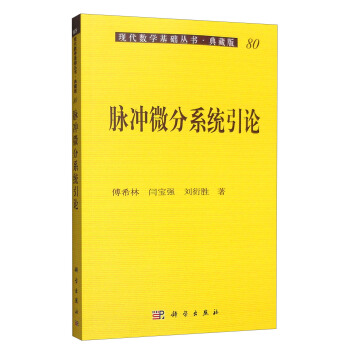
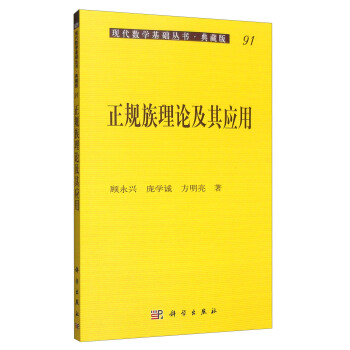

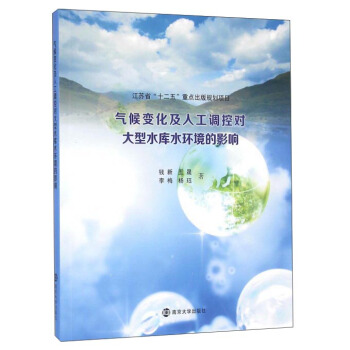
![有限元方法選講(英文版) [Series in Information and Computational Science·Collector's Edition 48:Selected Topics in Finite Element Methods] pdf epub mobi 電子書 下載](https://pic.windowsfront.com/11937285/578df661Nd47e31bf.jpg)


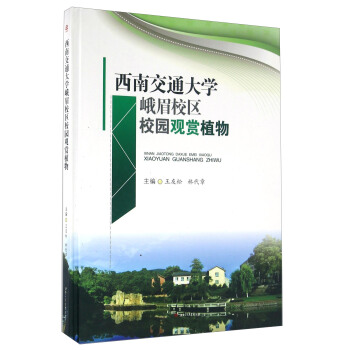

![國外數學名著係列(影印版)5:數值數學 [Alfio Quarteroni Riccardo Sacco Fausto Saleri:Numerical Mathematics] pdf epub mobi 電子書 下載](https://pic.windowsfront.com/11946894/5773bd83Ne641d393.jpg)


![北美水生態區保護 [Freshwater Ecoregions of North America A Conservation Assessment] pdf epub mobi 電子書 下載](https://pic.windowsfront.com/11960157/57ce8ddeN5a93d893.jpg)

![精要速覽係列:有機化學(第2版 導讀版) [Organic Chemistry(Second Edition)] pdf epub mobi 電子書 下載](https://pic.windowsfront.com/11963154/578df66bN92f28297.jpg)

![太赫茲技術 [Terahertz Techniques] pdf epub mobi 電子書 下載](https://pic.windowsfront.com/11967430/576a68c8N73516a4d.jpg)
